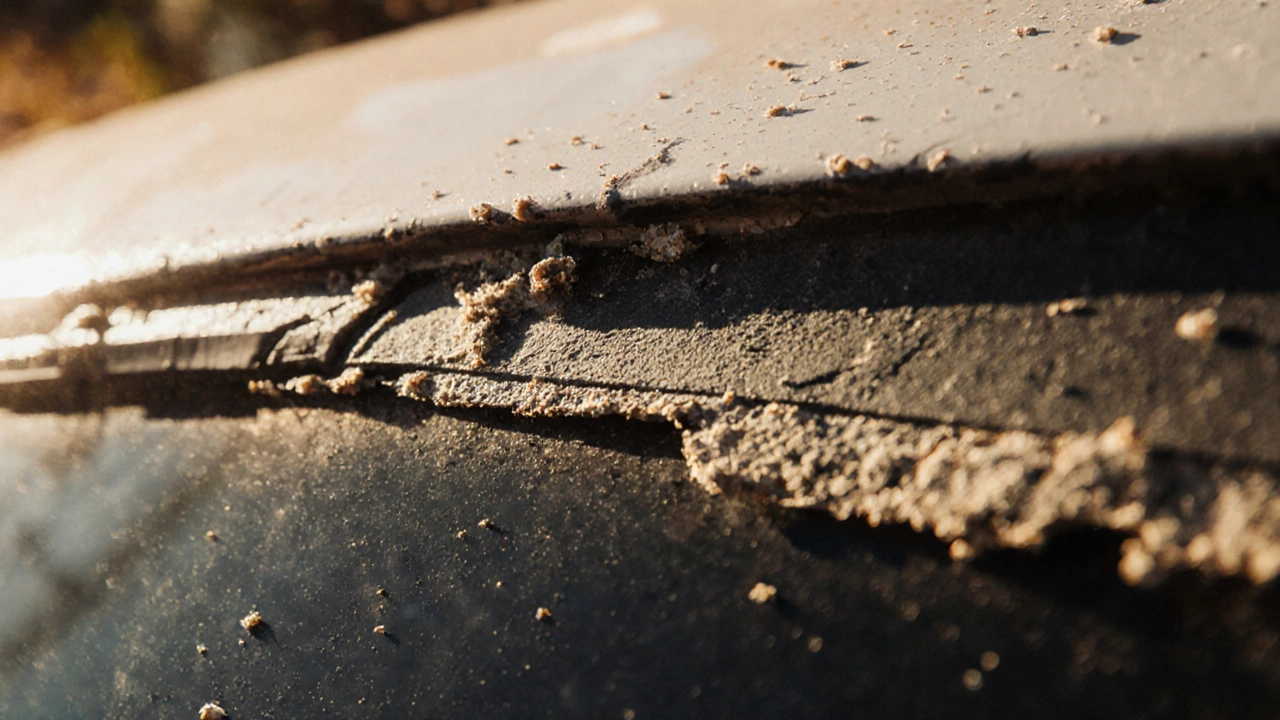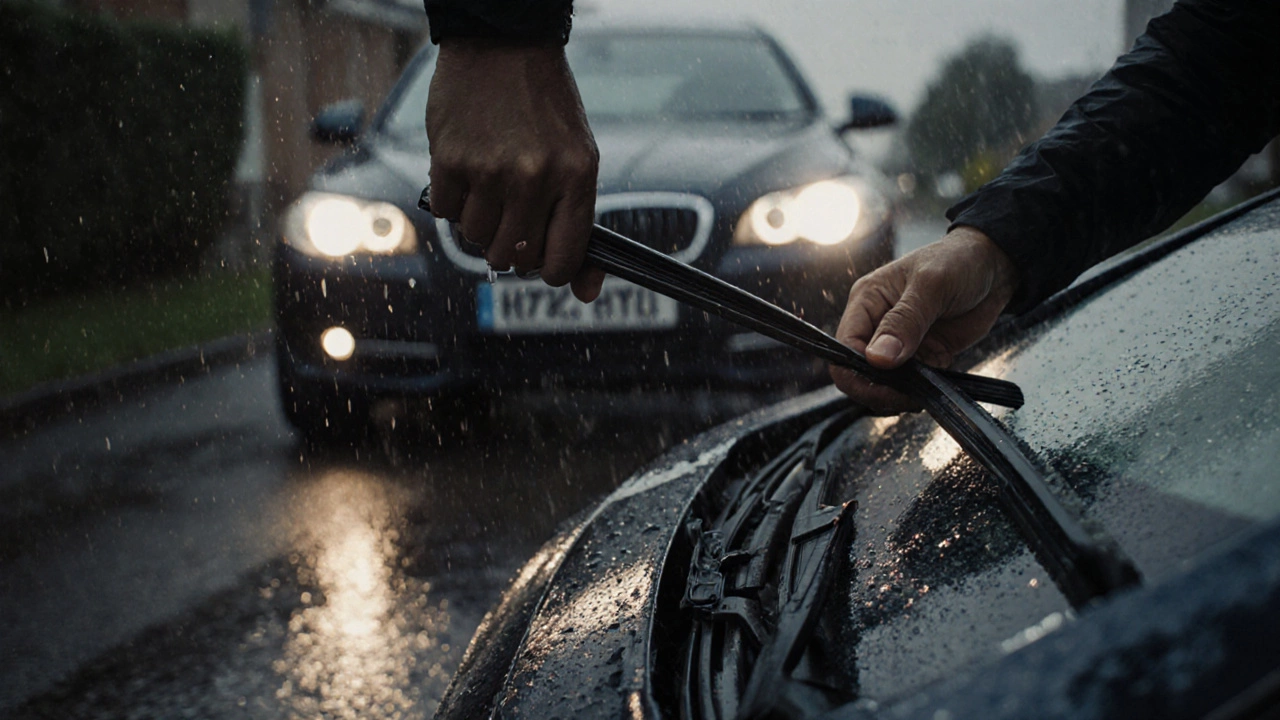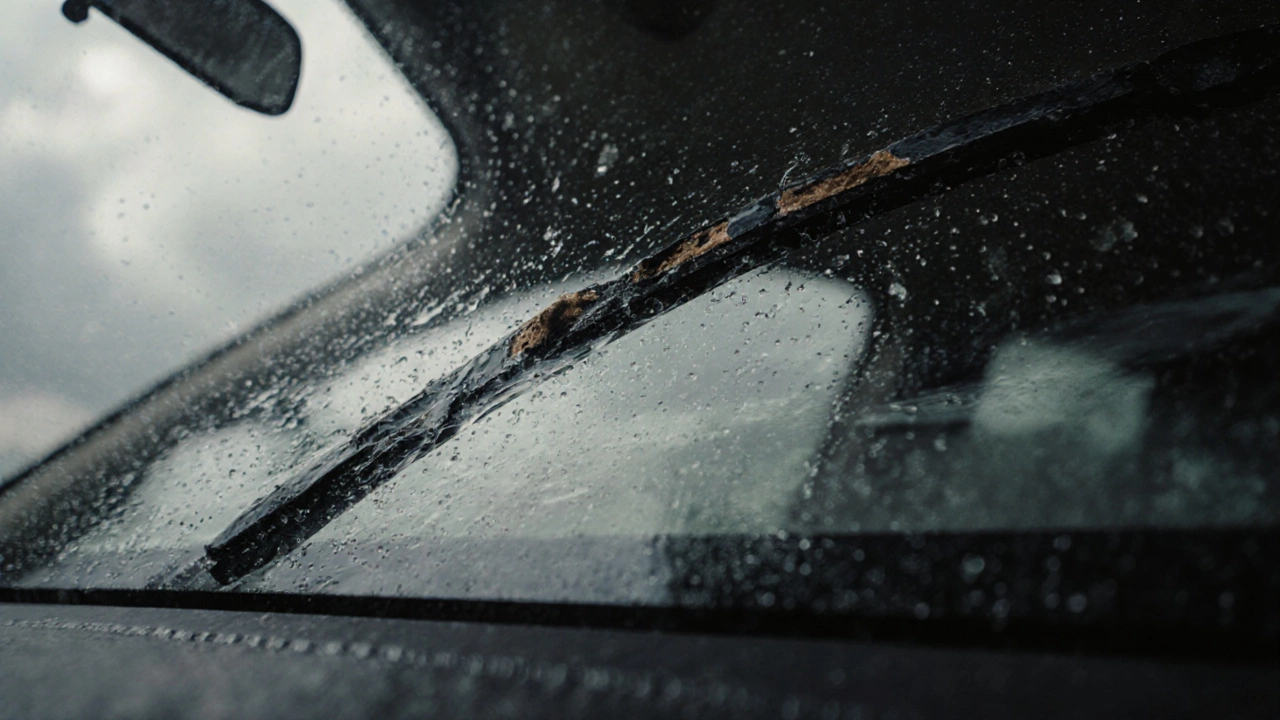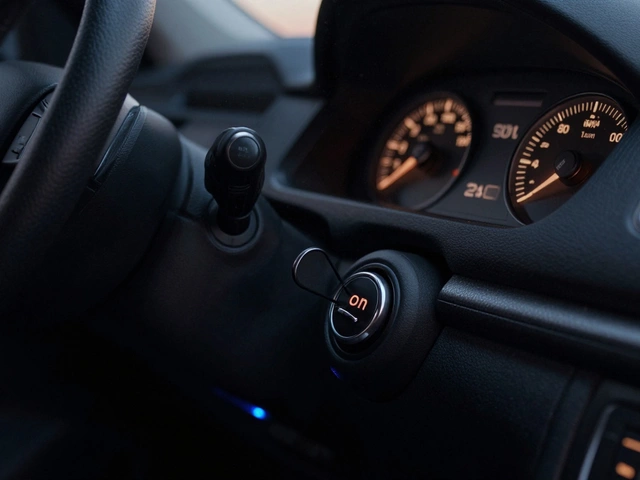Wiper Blade Health Checker
Wiper Blade Health Assessment
Check your wiper blades for common signs of wear. Each symptom increases your risk of reduced visibility. In UK weather conditions, this is a critical safety issue.
If your windscreen wipers are leaving streaks, smearing water, or making a chattering sound, you’re not imagining things. These aren’t just minor annoyances-they’re safety warnings. In the UK, where rain is frequent and visibility can drop in seconds, bad wiper blades can turn a short drive into a dangerous one. You don’t need to wait for them to fail completely to act. There are clear, everyday signs that tell you it’s time for new blades.
Your wipers leave streaks or smears
Streaking is the most obvious red flag. When the rubber on your wiper blade wears down, it no longer makes full contact with the glass. Instead of sweeping water cleanly away, it drags across the surface, leaving cloudy patches. This isn’t just a cosmetic issue. On a rainy day, those streaks can blind you at intersections or when merging onto the motorway. If you’ve cleaned your windscreen with vinegar or glass cleaner and the streaks still appear, it’s not the glass-it’s the blades.
You hear squeaking or chattering
A smooth, quiet sweep means your blades are in good shape. If you start hearing a high-pitched squeak or a rhythmic chattering noise as the wipers move, the rubber has hardened or cracked. This happens when the blades get old, exposed to UV rays, or left in freezing temperatures. The noise isn’t just annoying-it means the blade isn’t gliding properly. That uneven motion reduces contact pressure, which leads to poor wiping and, eventually, dry spots on your windscreen. You might even notice the wiper arm jumping or skipping across the glass.
The rubber is cracked, torn, or brittle
Take a minute to inspect the blades. Pop the wiper arm up and look at the rubber edge. If you see splits, chunks missing, or the rubber looks stiff and flaky, it’s time to replace them. Over time, sun exposure and temperature swings break down the rubber compound. In Manchester, where winters are damp and summers can get surprisingly hot, this degradation happens faster than you think. Even if the blade looks okay from a distance, close inspection often reveals tiny cracks you can’t see while driving.

They miss spots or leave dry patches
Have you ever wiped the windscreen and noticed a small patch of water still sitting there-right in your line of sight? That’s a missed spot. It happens when the wiper blade loses its flexibility or the metal frame bends slightly. The blade no longer presses evenly across the entire width of the windscreen. One end might be pressing hard while the other floats just above the glass. This is especially dangerous on wide windscreens or when driving at higher speeds, where even a small dry area can obscure a pedestrian or traffic signal.
They smear dirt instead of clearing it
Wiper blades aren’t just for rain-they’re also for dust, pollen, and road grime. If your blades are old, they don’t lift debris off the glass. Instead, they smear it around, leaving a greasy film. This is common after driving on muddy roads or during pollen season. You might find yourself wiping the windscreen with a cloth mid-drive just to see clearly. That’s not normal. Clean blades should pick up dirt and sweep it away in one motion. If you’re constantly cleaning the glass, the blades are the problem, not the dirt.
You’ve had them for over a year
Even if they seem fine, wiper blades degrade over time. Most manufacturers recommend replacing them every 6 to 12 months. That’s because rubber doesn’t last forever-it dries out, even if you don’t use the wipers often. In the UK, where winters are long and wet, blades that lasted through summer might be worn out by spring. Don’t wait for the first sign of trouble. If you can’t remember the last time you changed them, it’s probably been too long. A simple rule: change them every autumn, before the heavy rains start.

They bounce or lift off the glass
At higher speeds, especially on the M6 or A1, your wipers should stay firmly planted. If they start to lift, flutter, or lose contact with the windscreen, the tension in the wiper arm is no longer sufficient. This often happens when the blade frame rusts or the spring mechanism weakens. The result? You get patches of dry glass that can’t be cleared by a single swipe. This isn’t just a visibility issue-it’s a physics problem. The faster you go, the worse it gets. And when you need clear vision most-during heavy rain or sudden downpours-that’s exactly when the blades fail.
Replacing them is quick and cheap
Good news: replacing wiper blades doesn’t require tools or a garage. Most modern blades snap onto the arm with a simple hook or pin system. You can buy a pair for under £15 at any auto parts store or supermarket. Brands like Bosch, Rain-X, and Michelin offer reliable options that fit most UK cars. It takes less than five minutes. You don’t need to be a mechanic. Just lift the arm, press the release tab, slide the old blade off, and click the new one in. Do it yourself and save £30 on labour.
Don’t wait for failure
Wiper blades are one of the easiest parts to maintain-and one of the most overlooked. A cracked blade might seem harmless, but in a sudden downpour, it can mean the difference between seeing a car brake ahead of you-or not. In the UK, where weather changes fast and daylight fades early, clear vision isn’t a luxury. It’s a necessity. If you notice any of these signs, don’t delay. Replace the blades. It’s one of the cheapest safety upgrades you can make to your car.
How often should I replace my windscreen wiper blades?
Most experts recommend replacing wiper blades every 6 to 12 months. In the UK’s wet and variable climate, it’s best to change them in autumn before the rainy season hits. Even if they look okay, the rubber degrades over time due to sun exposure and temperature changes. Don’t wait for them to fail-replace them proactively.
Can I clean my wiper blades instead of replacing them?
Cleaning can help temporarily if the blades are just dirty. Use rubbing alcohol on a lint-free cloth to wipe the rubber edge. This removes grease and road film that cause streaking. But if the rubber is cracked, hardened, or torn, cleaning won’t fix it. You can’t restore worn-out rubber. Cleaning is a short-term fix, not a long-term solution.
Do more expensive wiper blades last longer?
Not always. Budget blades from brands like Halfords or Repco work fine for most drivers. Premium blades like Bosch Icon or Michelin Stealth have better rubber compounds and aerodynamic designs, which can reduce noise and improve contact at high speeds. But for average UK driving conditions, mid-range blades offer the best balance of performance and price. You don’t need to spend £40 on blades unless you drive a lot on motorways or in heavy rain.
Can I replace just one wiper blade?
You can, but you shouldn’t. Wiper blades wear at similar rates. If one is worn out, the other is close behind. Using mismatched blades causes uneven wiping, streaking, and extra strain on the wiper motor. It’s cheap insurance to replace both at the same time. You’ll get a cleaner, more consistent sweep-and avoid having to do it again in a few weeks.
Why do my wipers only work poorly in the rain?
Wiper blades are designed to work with water. If they only smear or streak when it’s raining, the rubber has lost its flexibility or is contaminated with silicone residue from window cleaners. Dry wiping might seem fine, but water exposes the flaws. Rain highlights imperfections in the blade’s edge. That’s why they seem okay on dry days but fail when you need them most.








